It’s a brave new world with information and communication at our fingertips. Anything you want to know should only be a click away. But is it? Most of us will identify with the frustration that occurs when it isn’t.
On the other side of the coin, businesses are eager to share information. They want people to know about what they do, and they want to get leads and conversions. More than that, they want to retain clients and get referrals.
Whichever way you look at it, businesses need to be where their customers are, whether that’s in store, online, or on social media. As for the ubiquitous mobile phone, it’s the tool of choice for both you and your customers. Ignore this fact at your peril!
With new ways of doing business, new terms come to light, and “omnichannel,” is one of the buzzwords you may have heard. So, what’s omnichannel, and how and where should you be applying the omnichannel approach?
Table of Contents
- Omnichannel Definition
- A Broader View of the Omnichannel Approach
- How Omnichannel Solutions Help Different Industries
- Differences Between Omnichannel and Multichannel
- Omnichannel Customer Service
- Design an Effective Omnichannel Customer Journey
- The Omnichannel Customer Experience
- Omnichannel Communication
- Omnichannel Marketing
- Omnichannel Retail
- Omnichannel Analytics
- Omnichannel Trends
First, Let’s Define Omnichannel
The online dictionaries have been busy, but as so often happens when you’re trying to produce a neat, concise definition, a lot of info gets lost along the way. Search engines support a definition that says the omnichannel model consists of integrating different types of shopping: online, using mobile, and visiting physical stores. But there’s much more to it than that.
“Selling” is a bigger word than it may look like on the surface, and getting people interested enough to buy is only the first step. Let’s trace the process and see how omnichannel methods apply.
A Broader View of the Omnichannel Approach
To begin your customers’ journey, we have omnichannel marketing. Here, businesses try to reach their prospective clients using all media at their disposal. It can be an expensive business if you’re going to try it in its purest form, which would mean using absolutely every type of media to gain exposure. But you can trade off omnichannel vs multichannel instead. Can’t afford TV ads? No problem, hit social media and AdWords hard. Use all the online options possible, and you’re working the omnichannel vs omni-digital difference.
But that’s just the first step in selling. Next up, we want to catch our clients where they are, and sell to them. Your physical location or locations can’t really do this, but your digital ones can. After all, just about everyone surfs the internet using computers and phones. Once there, they won’t just be visiting websites: there’ll be plenty of time spent scrolling through social media. Link your marketing posts to your online store, and purchases from all over the world come flooding in, at least, if you play your cards right.
But somewhere between awareness, a buying decision, and the checkout, there’s another area that needs the omnichannel approach. That’s customer service and support. Find your customers across channels; sell to them wherever they may be; but you’d better be sure you have customer service available on every channel your customers use, and it had better be available 24/7. Let’s not forget that the customer’s journey isn’t over until he or she is satisfied, so that means after-sales service too.
Now, let’s put this in the context of a global marketplace. Impossible? Capital intensive? It doesn’t have to be. Let’s dip our toes in the water with some examples of how you can apply the omnichannel approach. But first, let’s look at the benefits.
How Omnichannel Solutions Help Different Industries
No matter what industry you’re in, your customers are either your top promoters, or your most influential detractors. Happy customers mean even more customers, and that’s why omnichannel solutions can help you to take your business to the next level. We already know that various platforms can help organisations to get more customers. But once they’re converted, customer experience and service often forms the basis on which your business is judged.
A lot of the most successful companies in the world are using the omnichannel model, and a look at the big names famed for their successful application of this strategy could turn into a long one. Think of names like Starbucks, Ikea, and Amazon. But it doesn’t end there. Energy companies, pharmaceutical firms, and the automotive industry are just three examples of industries that are leveraging the omnichannel approach to boost sales, improve the customer experience, and gather data.
Did we mention data? Communication is a two-way street. You need to know what your customers are thinking and saying: what you’re doing well, and what you need to do better. Keeping your finger on the pulse across channels helps you to know what matters to your customers. As you can imagine, this requires some pretty smart software to process all that information and dedicated staff to capture it.
Differences Between Omnichannel and Multichannel
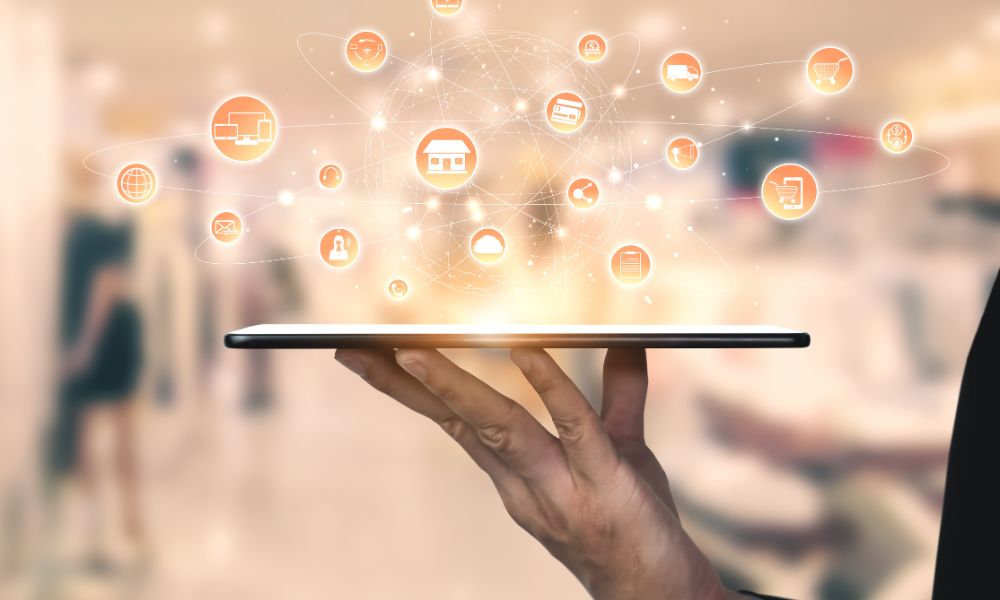
Most businesses these days are multichannel. The “channels” are the “places” where their businesses are active. For example, they have a store or stores, but they also work through their websites, make and take phone calls, send and receive emails, and are active on social media. Perhaps they throw a few extras into the mix, for instance, a mobile app. You can visualise a multichannel model as a diagram with your business at the centre, and all the different channels you use surrounding it and linking to your business.
Omnichannel is similar to multichannel in that you use multiple channels to market your products, talk to customers, and sell goods. But there, the resemblance ends. Take the mental picture we created when discussing multichannel. Now, place your customer in the centre, and overlap all the channels. The first big difference? Your customer is at the centre of things! And, because all the channels overlap, your customers can switch channels and simply resume their interaction with your business right where they left off.
Read more about the differences between omnichannel and multichannel.
Omnichannel Customer Service
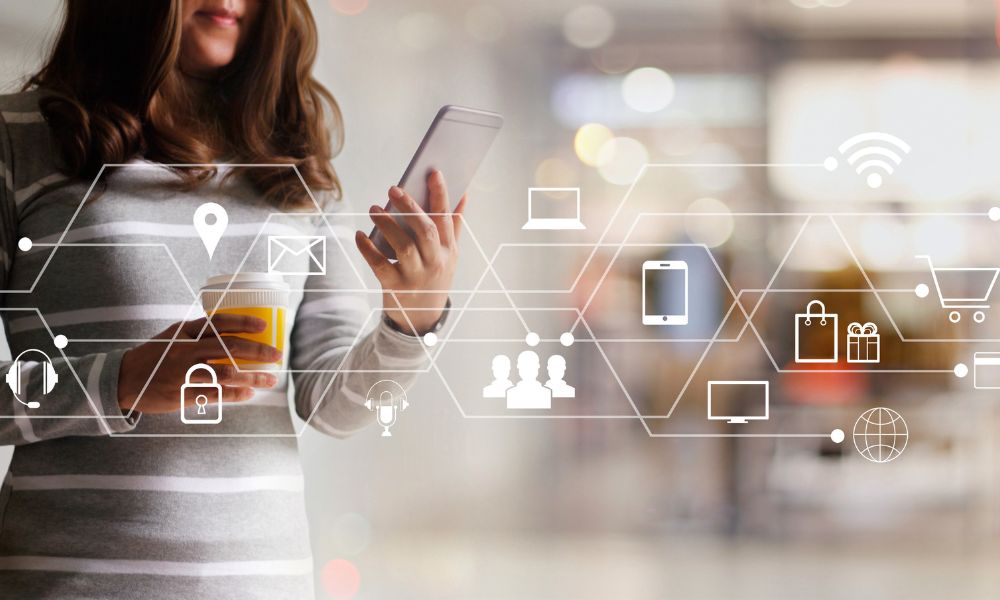
If your business sells to people using several channels, it makes sense that customer service must be available and consistent across all of them. Omnichannel customer service, like omnichannel sales and marketing, doesn’t work in platform or channel-based silos. Businesses that adopt omnichannel communication for customer service use software to link each customer’s current situation to past events regardless of the communication methods customers chose to use at the time. This allows customer service personnel to provide highly relevant assistance based on previous interactions. It benefits both the customer and the business.
One of the secrets to great service is understanding the path leading to a request for assistance and the individual customer’s context. It saves time, and if more than one interaction is needed to achieve a desired result, your service agents and customers don’t have to navigate the whole support process from scratch. Think about the old-fashioned interactions you enjoy with small brick-and-mortar businesses where you’re a “regular” and staff recognise you instantly and know what you want. There’s an existing relationship, and these businesses know its history. Scale that up to a business with thousands of customers. Can you help customers as if they were old friends? With the right technology and the right people to use it, you can.
Read more about omnichannel customer service.
Design an Effective Omnichannel Customer Journey
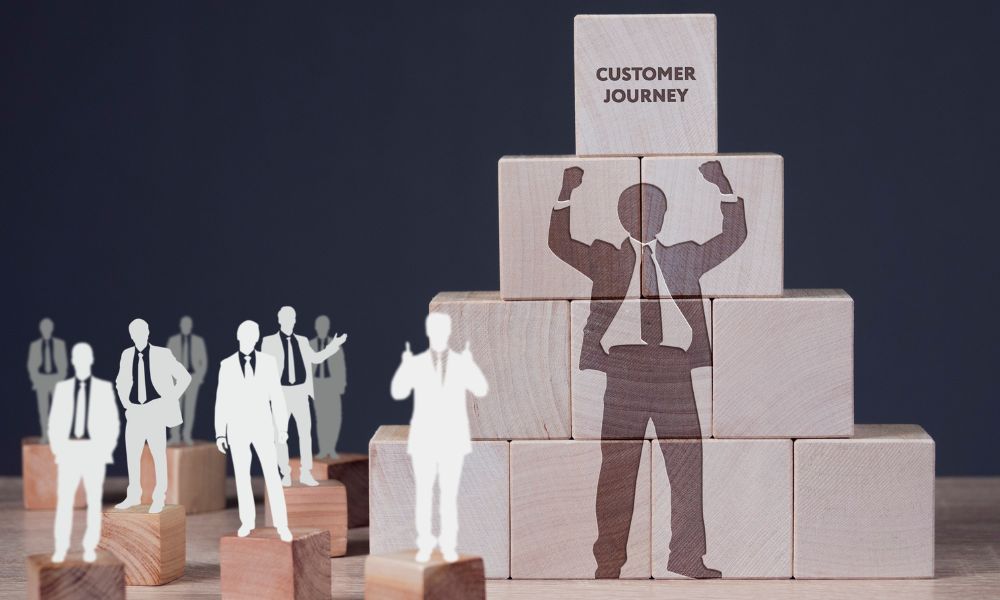
When designing omnichannel customer journeys, your first step is to consider all the routes that customers follow before making a purchase. Take it as a given that they’ll skip between channels and research the journeys that customers most often follow first. Now that you know which channels customers are likely to use and how they might jump between channels, you can look at optimising touch points so that each one matches the stages of the customer journey your customers may follow. With data showing how customers shop, you can start working on ways to move prospective customers through the sales funnel towards conversion. Keep their experiences in mind throughout. People like reminders and recommendations but they don’t want to feel overwhelmed by them.
With thousands of customer journeys to follow and multiple channels to link, you’ll need the right technology to process and record customer information. You might also want to look for ways to persuade customers to add to the channels they’re already using. For example, you might encourage them to share an email address or download your app. Data shows you what customers do, but your most valuable information comes from the things customers say. Use simple feedback forms to see how you’re doing. For instance, customer effort scores tell you whether customers found the purchasing process easy and intuitive.
When surveying customers, allow them an opportunity to comment on their experiences in greater detail. The few customers who take advantage of this are a source of valuable info. Don’t forget to look at customer support requests – they could indicate areas where your customers struggled.
Information is only as useful as the action that follows. Use your data to create a veritable freeway towards conversion. Your goal? Make it extremely easy for customers to make that all-important purchase.
Read more about creating customer journeys.
The Omnichannel Customer Experience
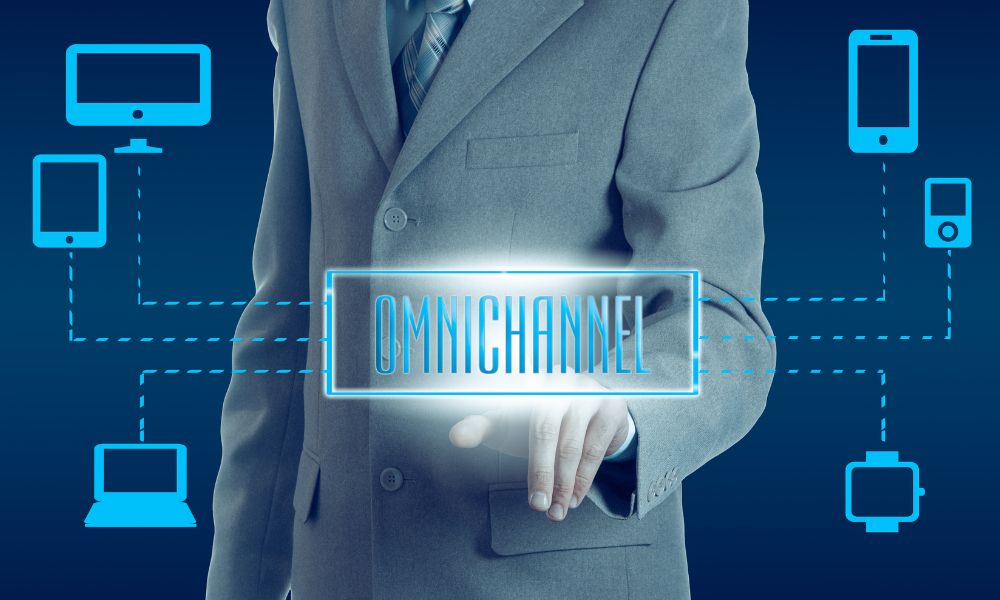
Customers may send an enquiry on any one of several social media channels where your marketing messages are seen, follow up with an email, and then contact you over the phone. The omnichannel customer experience is determined by how seamlessly a company can integrate all these experiences and communications so that customers aren’t treated as if they were “strangers” every time they switch channels.
With businesses fielding many communications across multiple channels, integrating all communications from each client into a coherent whole can prove challenging. Top omnichannel customer experience tips will always begin with the methods used to organise communications.
The people responsible for interacting with clients need to understand the customer journey so far in order to respond appropriately. The alternative is to place customers in a position where they must repeat themselves, going through a history that is apparent to them, and that they feel should be obvious to a business that claims to prioritise its customers.
Needless to say, trying to organise customer communications across multiple channels without the help of advanced software is all-but-impossible. Improving the omnichannel customer experience begins with leveraging technology, but doesn’t end there. Technology is only as good as the people who use it and the methods they employ. So, besides having the capacity to integrate communications across channels, businesses need people with a strong understanding of the business and the ability to join the dots across communications histories to understand their customers’ current situation properly.
Read more about the omnichannel customer experience.
Omnichannel Communication
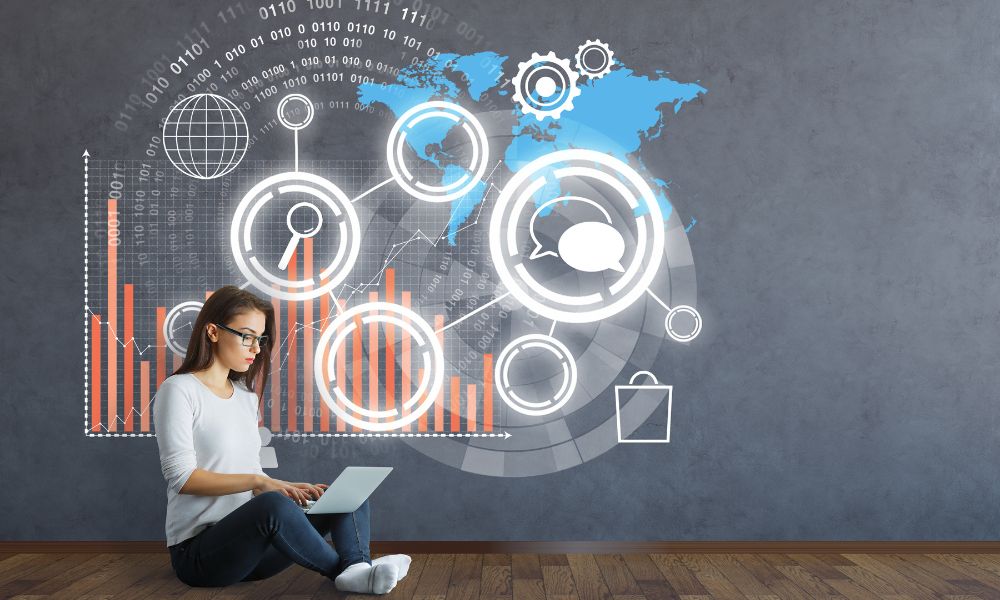
To help you understand what omnichannel communication means it helps to think of all the ways or places where your customers may reach out to contact you – or attempt to do so. Of course, they can give you a call. Or perhaps, they’ll interact in live chat or on your website. But if they happen to be in their social media accounts at the time, there’s every chance that they’ll hunt you down on Facebook, Instagram, LinkedIn, or any other platform where your business is active. Then, of course, there’s email, and if you’re using mobile chat apps for your business, they enter the picture too.
Just responding on the channel where you were contacted doesn’t mean you’re getting your omnichannel communication strategy right. Let’s illustrate this with an example. Your customer first contacted you with an email enquiry. Your team responded and she decided to buy the item. But she had some trouble with the setup, so she picked up the phone and called customer support. Here, an agent helped her to resolve her issue. But then she tried to do something new with your product and ran into some difficulty, so she sent your company a direct message on Facebook.
It’s possible that her earlier interactions with your company could have some bearing on her current issue, and she isn’t going to “feel the love” if the agent who replies to her treats her like a stranger. She’ll be even less happy if she is asked to perform steps she already completed successfully and needn’t do again. Meanwhile, your customer and your service agent are wasting time and your customer is responding with a sigh and saying “Yes, I already did that,” while trying to remain patient.
Wouldn’t it be better if your employee could access every communication that preceded the current one and just pick the conversation up where it left off last time? It certainly would! But how can it be achieved? An omnichannel communication platform keeps multiple customer accounts and communication channels in a single place. When accessing it, your customer service agents should be able to see all the information they need to help your customers without taking them all the way back to square one.
Read more about omnichannel communication.
Omnichannel Marketing
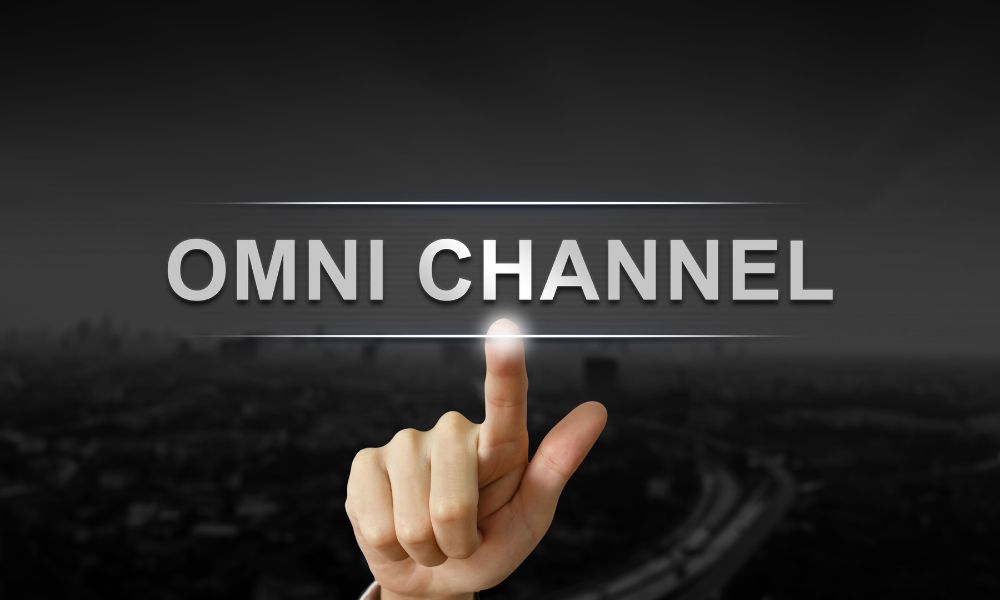
There are some pretty eye-watering omnichannel marketing definitions out there, but in practical terms, it simply means being where your customers are, no matter where that is. So, you have a market. It’s active on Instagram. It uses Facebook. It likes to surf the web and might send a website enquiry or email. Maybe your preferred customers are younger and like Snapchat or TikTok. Or, they like to talk over the phone. Maybe some of them visit your business in person too! It’s not unheard-of, after all. Now, imagine a situation in which your business has mastered all these possible opportunities to market itself to potential customers. That’s omnichannel marketing!
If you’re “everywhere,” you get exposure to a bigger audience. But to get the best out of your omnichannel marketing efforts, you need to decide where your audience is likely to take you seriously. That’s easy enough to determine. But apart from being where your customers are, what other benefits can you hope to realise? The key lies in the “omni.” They commented on Facebook. They sent you an SMS, they emailed you, and every time, you knew who they were, what they said to you before, and how you responded in the past. This is startling to look like a relationship! Could it be love? They’ll certainly form a positive impression of your efficiency! In a nutshell, we’re looking at a wider audience and better opportunities for relationship building if you can manage an omnichannel approach effectively.
Read more about omnichannel marketing.
Omnichannel Retail
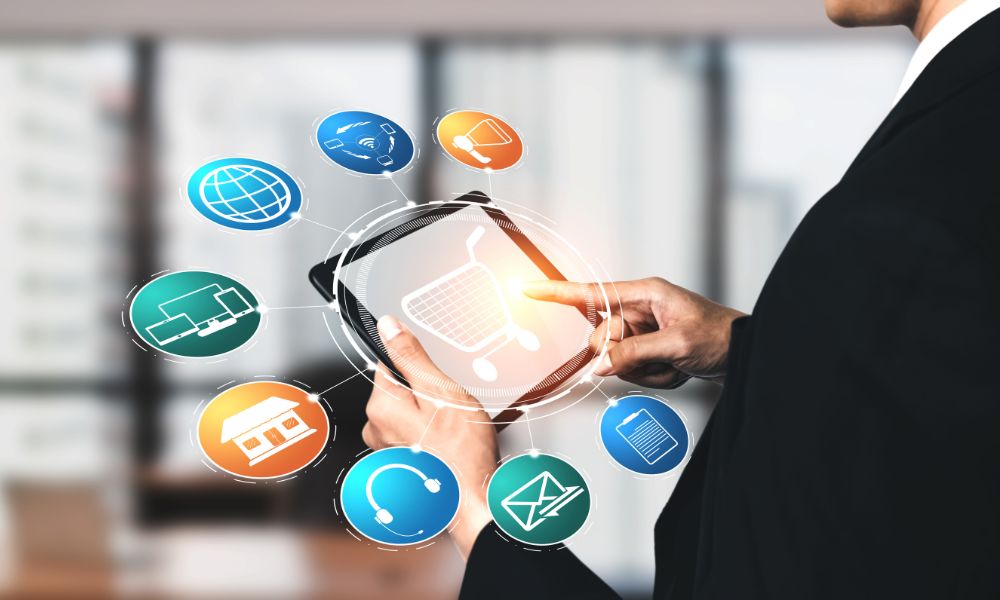
The omnichannel retail strategy aims to unify customers’ experience across all the channels your brand uses. It rests on the principles of visibility, personalisation, measurement and optimisation. Its goal is to craft experiences that will appeal to all customers regardless of their individual interests, how they interact with your brand, and whether they switch channels in the process. As a simple example, imagine that you see a product you’re interested in while browsing your socials. You decide to move to the website and you instantly find the product you were interested in. You’re also shown some related products. But you notice that there’s a physical store near you. You can order the things you want and pick them up in store, saving on delivery costs or qualifying for a discount. It’s a done deal and you’re happy with the results.
So far, the store has led you through a simple yet positive and consistent customer journey spanning three channels. But it doesn’t stop there. For example, you may have decided to download the store’s app and joined its mailing list. On these two additional channels, you receive offers you’re genuinely interested in and you buy even more products. As you can imagine, the retailer benefits, but so does the consumer. However, without the synergy between the different channels you used, it wouldn’t have happened at all. To achieve this, the retailer implemented a conscious omnichannel strategy.
Read more about omnichannel retail.
Omnichannel Analytics
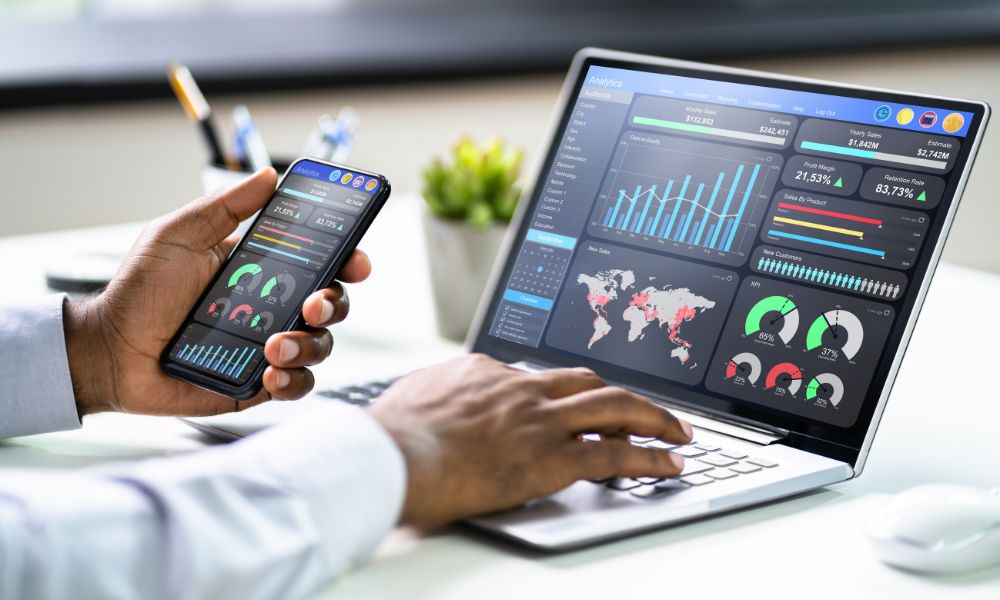
Omnichannel analytics attempts to play the sleuth, helping businesses to know the route customers follow before committing to a purchase. Your business can use that information to make each step easier, pleasanter, and more compelling. It can also analyse and personalise individual experiences, creating a “conversation” between your business and prospective customers instead of allowing each interaction to occur in isolation. Omnichannel analytics are reported by synthesising information across platforms and sales channels and presenting them in one place. Instead of focusing on channels, they focus on customers, attempting to determine what leads them to purchase, and what acts to deter them from purchasing. Getting these analytics requires the use of specialised software or tools.
Omnichannel analytics can help you improve customer experiences, help with inventory decisions, and indicate strategies that improve profitability. You’ll be able to fine-tune your marketing strategies by understanding customer preferences and motivations better. You may identify bottlenecks and sticking points, giving you an opportunity to remove obstacles to purchasing. Besides this, you might spot elements which, though they don’t directly make sales, are essential contributors in customer decision making.
In short, you’ll be able to plan marketing, selling and fulfilment with a focus on what works for your business and its customers. Instead of just trying to guess, you’ll know where your resources can best be allocated. And, you might be in for some surprises along the way. Trying to gather, synthesise, and analyse all this data by hand isn’t practical, but with software doing the legwork, you’ll get better insights from your data and you can even follow it in real time.
Read more about omnichannel analytics.
What are the Trends?
With the power of omnichannel approaches being harnessed by so many big names and brands, it comes as no surprise that building on this success is the trend. Contactless selling is big. Social selling is huge. And, despite the breadth of this approach, social networking and one-on-one contact adds a personal touch. That might sound like a tough call when you’re dealing with thousands of contacts a day: even more so when you’re doing this across the globe. But it really is possible to be omnichannel, yet give customers a feeling of connection.
In part, customers can gain this sense of belonging by supporting brands and companies favoured by friends and family members. But interactions between individuals and the companies they deal with seal the deal. That’s where RSVP provides an inspiring example of how companies can keep it personal despite adopting a ubiquitous, omnichannel approach.
Personal Service in an Impersonal World
RSVP understands that your omnichannel marketing and sales efforts are only as good as your ability to “walk the talk.” When your customers contact you, they may be happy with a chatbot for simple queries, but they’ll only get frustrated if all they can get is generic responses.
There are times when customers want to talk to a person, and that person must be a good listener and a strong communicator. They don’t want to repeat themselves either. If they already called, emailed, and messaged via social media, they want whoever they’re dealing with to pick up the conversation where it left off. Omnichannel is big, but small is beautiful when it comes to the customer perspective. They don’t want to feel like “just” another customer.
Needless to say, this means having a call centre that’s equipped with some pretty advanced Customer Relationship Management Software that gives you the complete 360 degree view of your customer. Showing every touchpoint via every channel, with operators equipped to resolve any query, regardless of how the customer prefers to interact with your brand. It also means having brand representatives who are able to speak your customers’ language, both literally and in the figurative sense. And since data gathering helps you to improve, you need feedback on recurring issues.
For most companies, having an in-house call centre that checks all the boxes is a tall order. Try it and the personnel costs alone are likely to be very high indeed. Outsource it cheap, and your customers are sure to notice. You’ve probably experienced this first-hand, so we’ll skip the details here. Suffice to say that it’s painfully obvious.
However, it’s entirely possible to outsource your omnichannel call centre seamlessly – provided your chosen communications company prioritises quality, both for you and your customers. At RSVP, we have the tech and the people you need to make your customer interactions memorable, and for all the right reasons.
Looking to market your business across multiple channels? Looking to sell anywhere, anytime with revenue just a click away? Ensure that your contact centre is ready to support your efforts. Need help? Let’s talk omnichannel business! Call us today.
Read our guide to customer experience.
Read our guide to customer service.